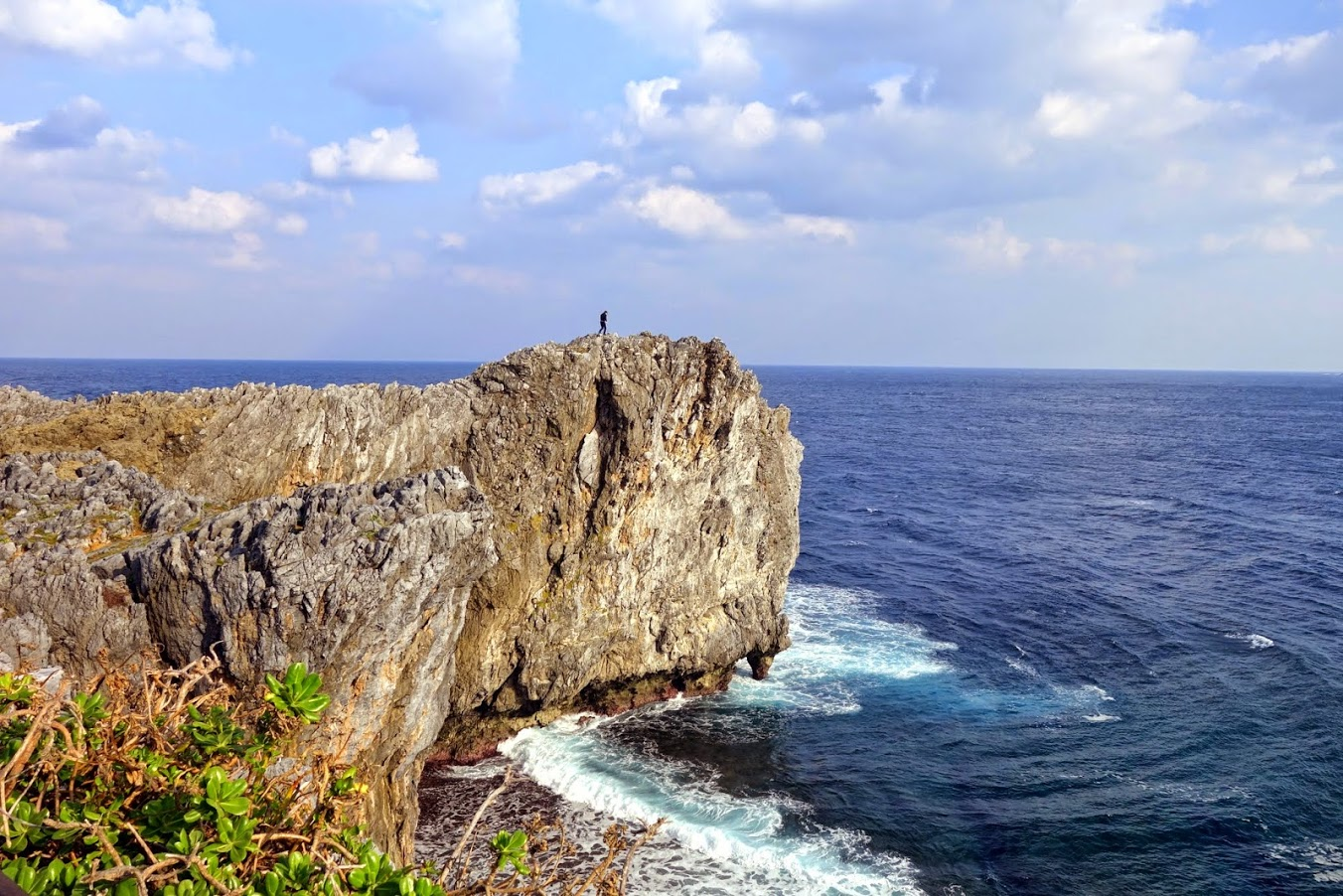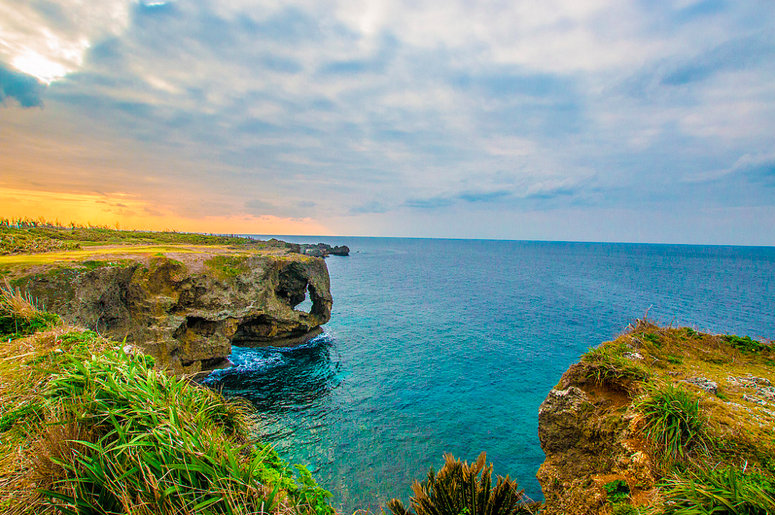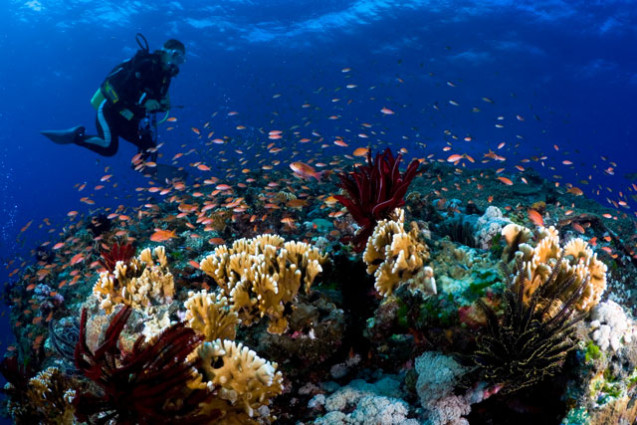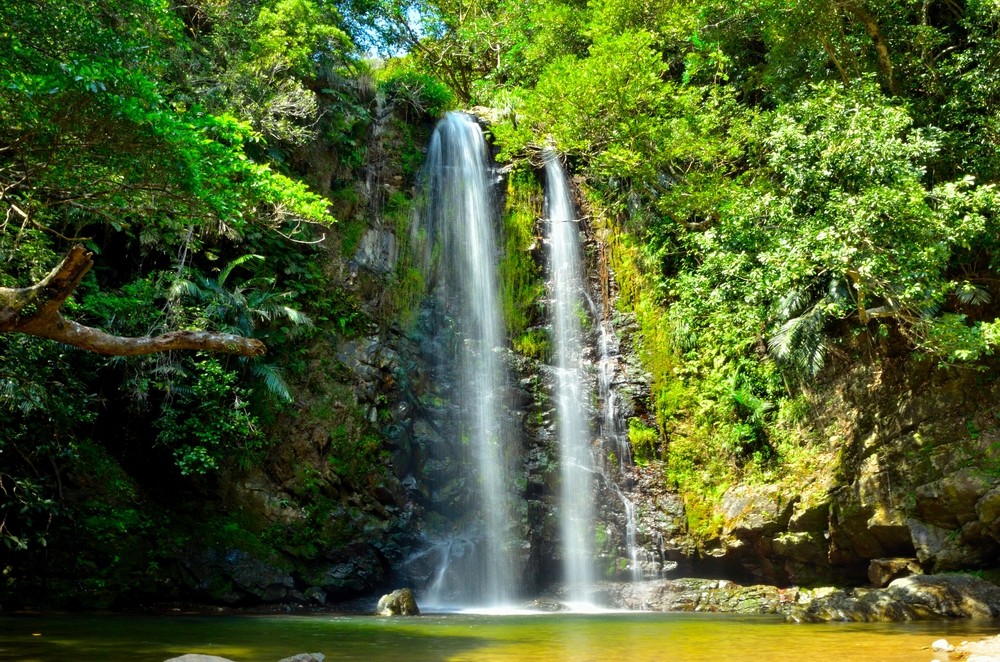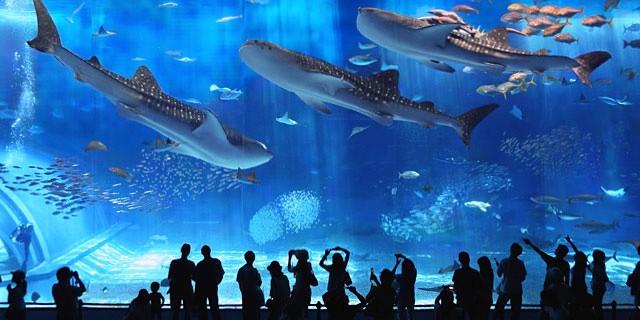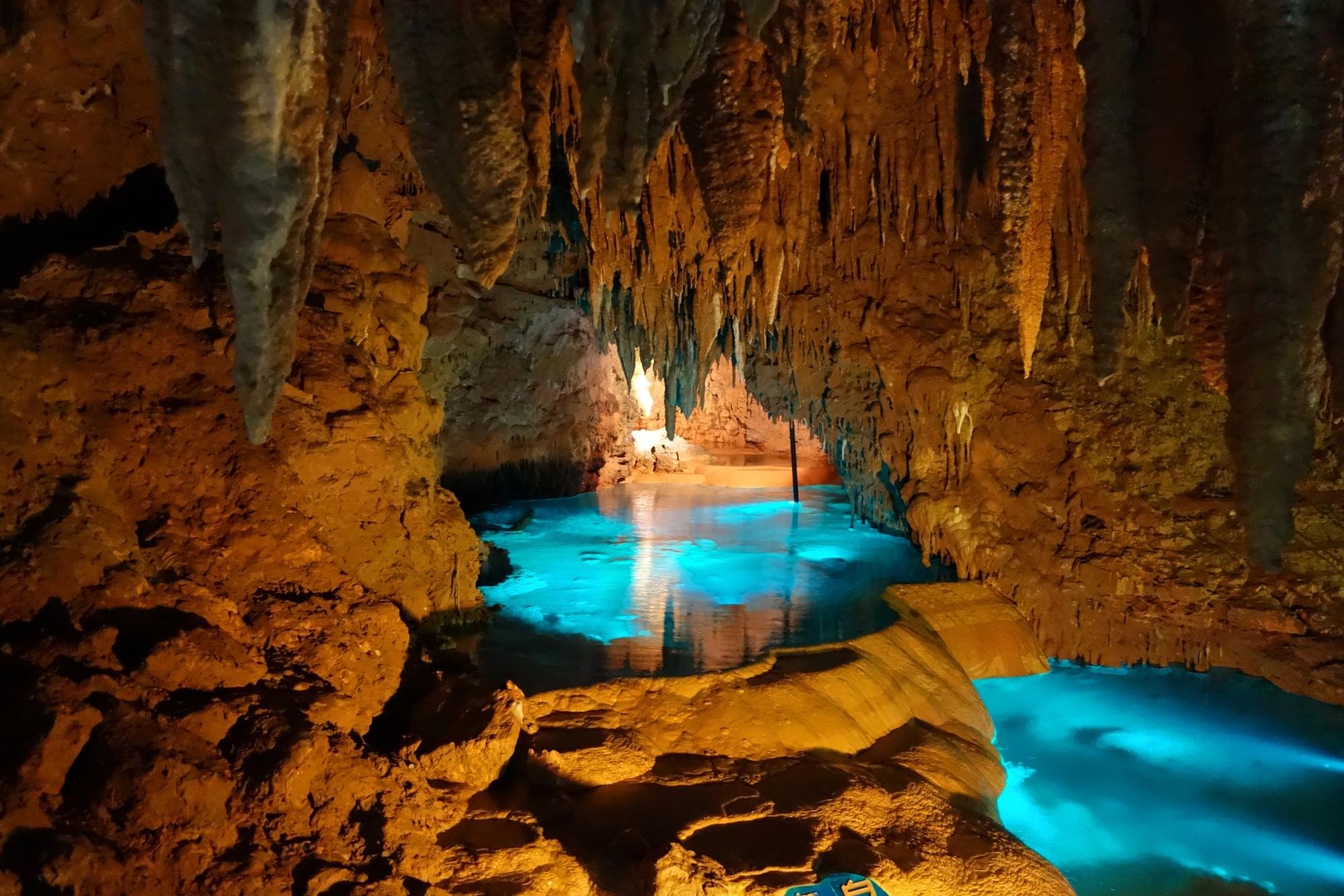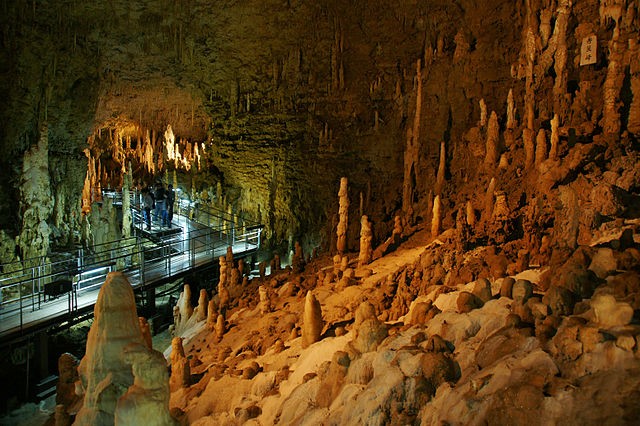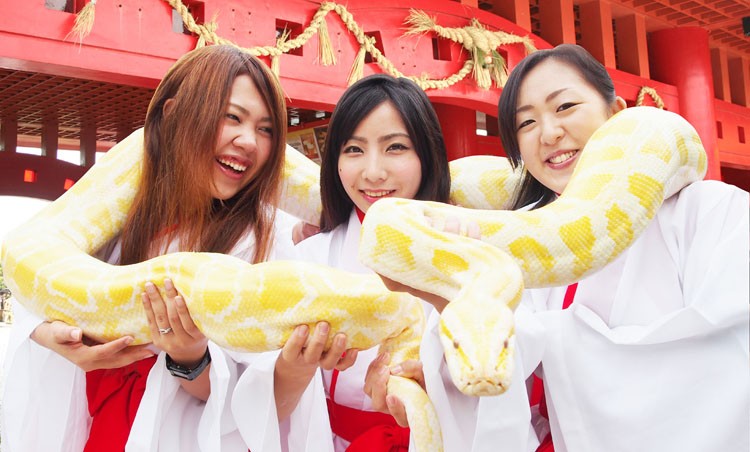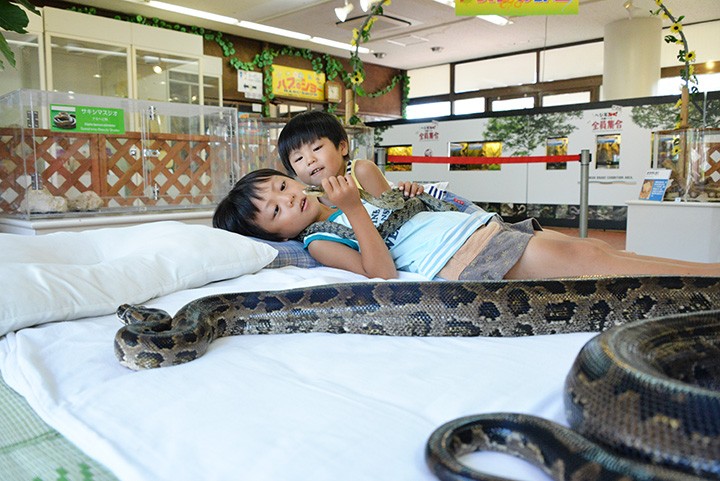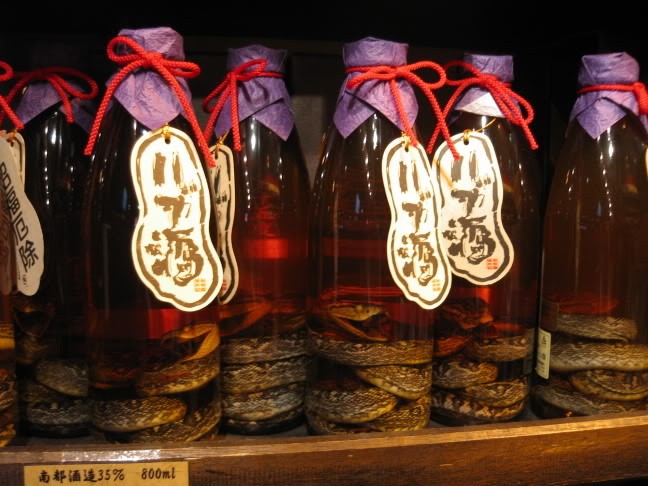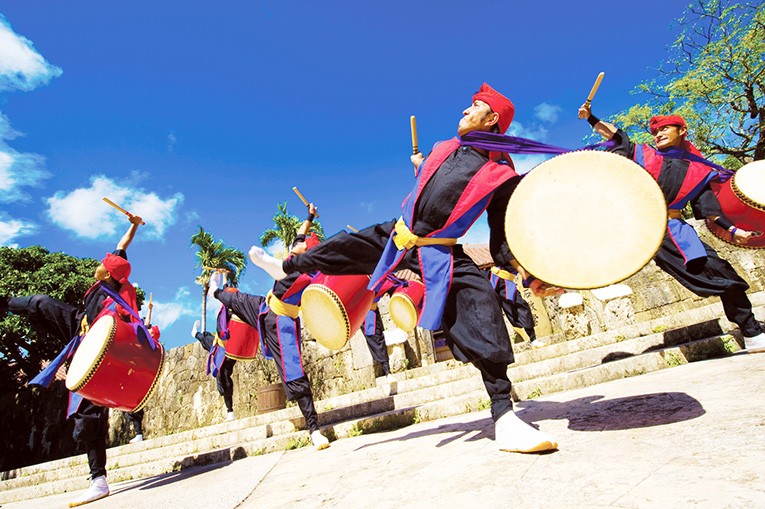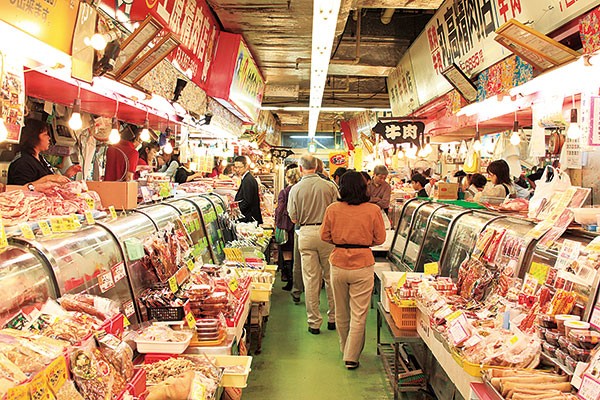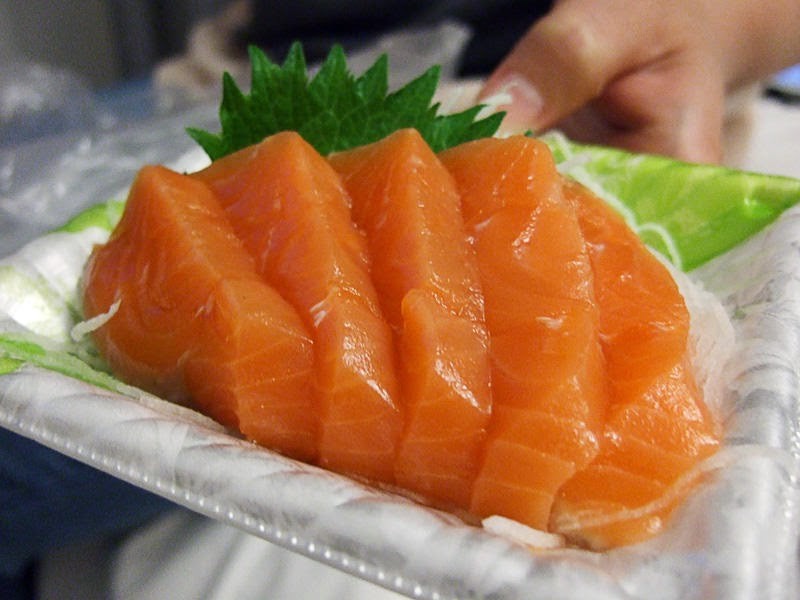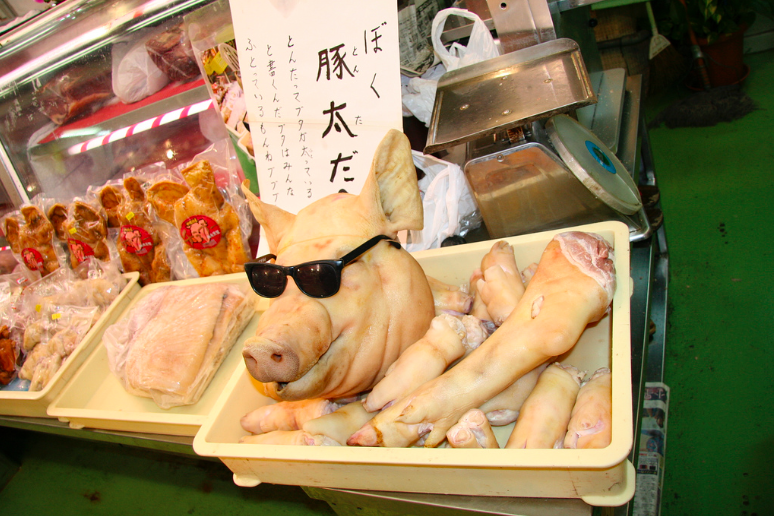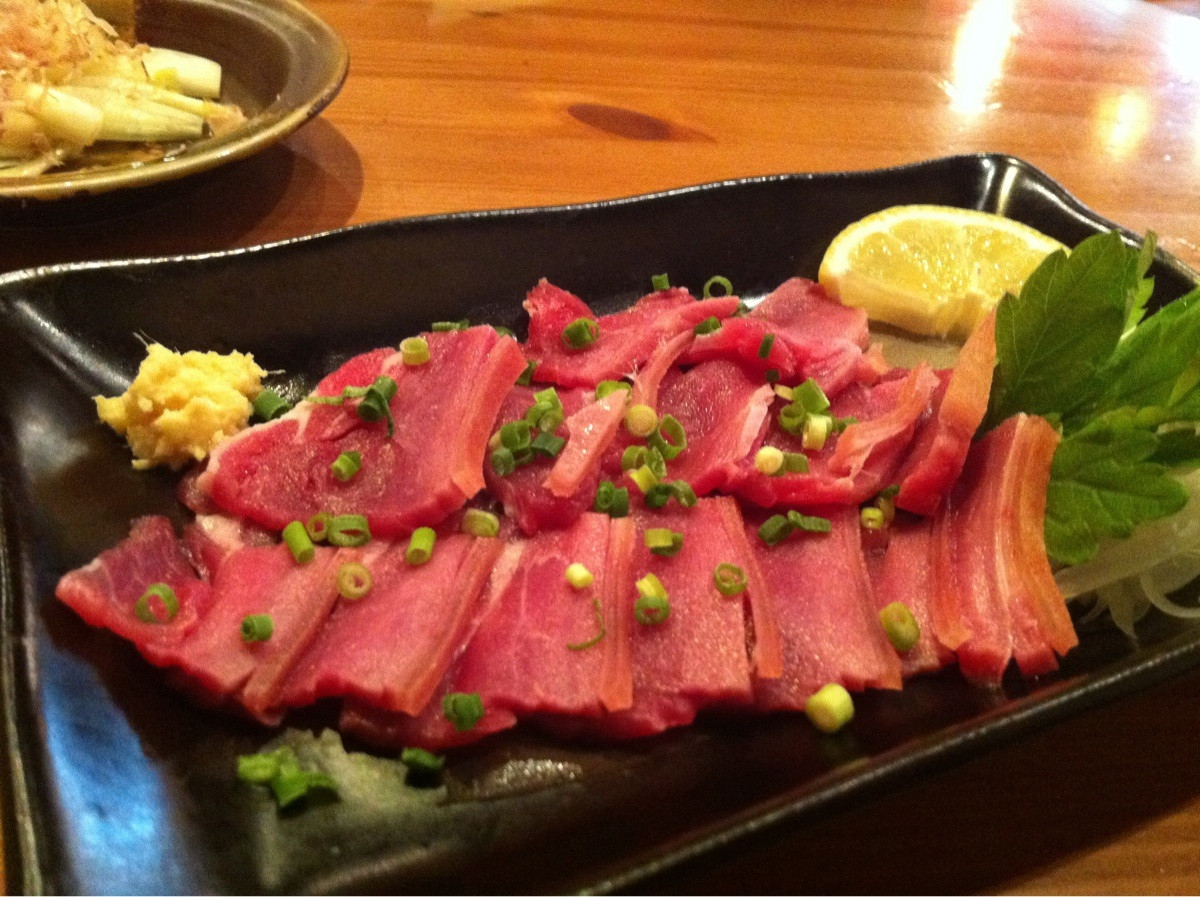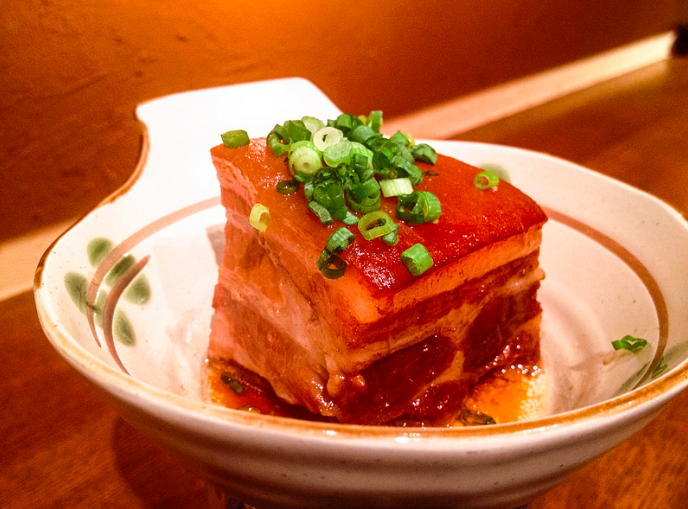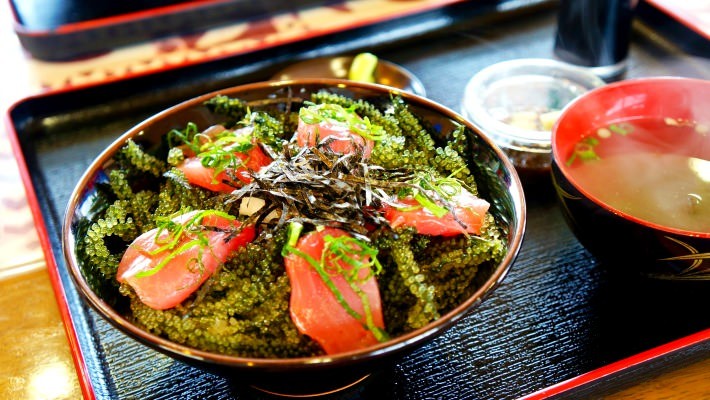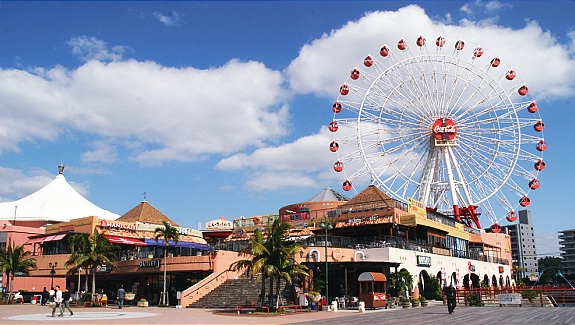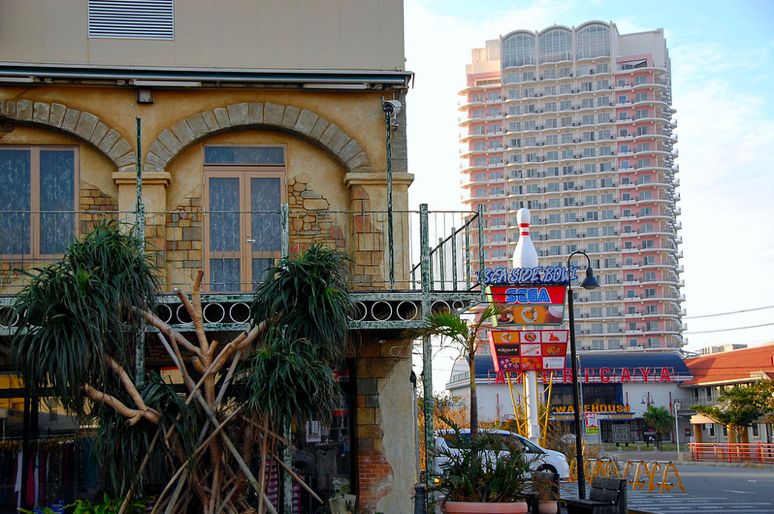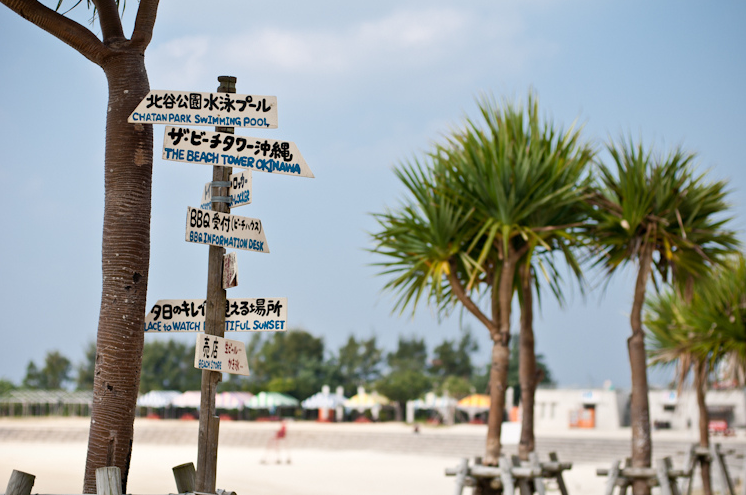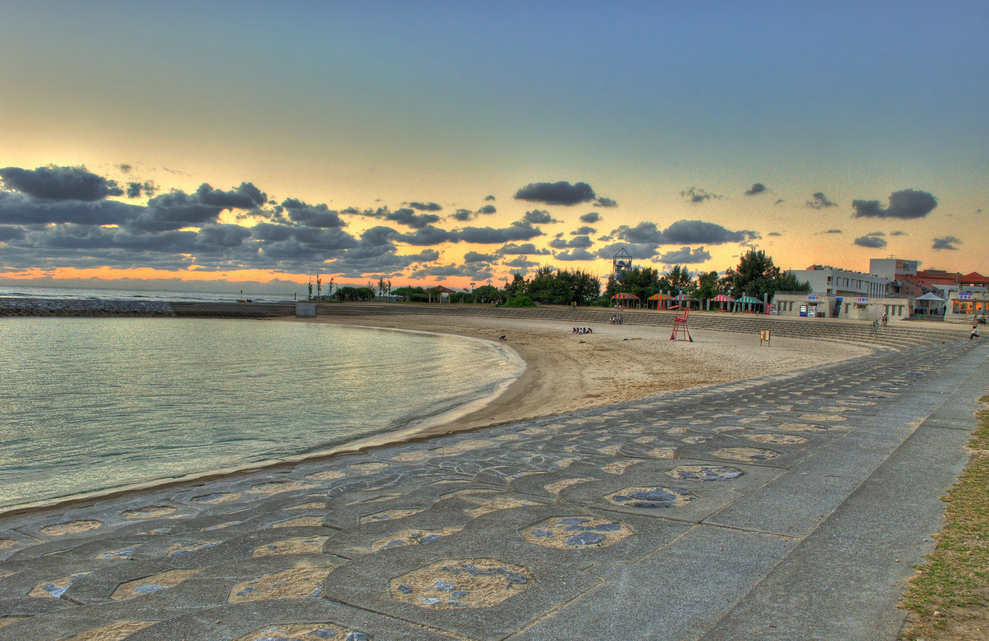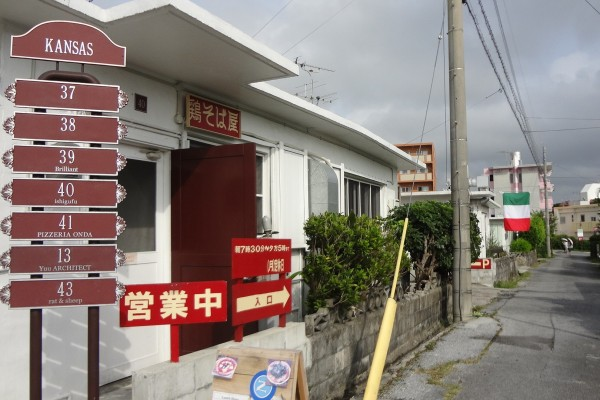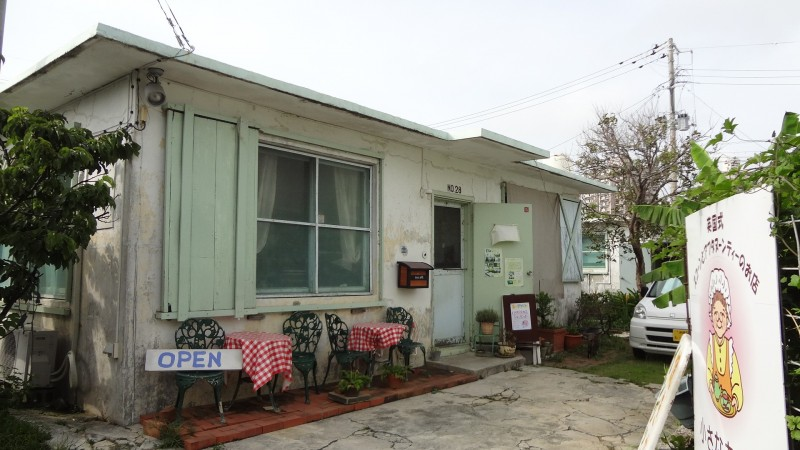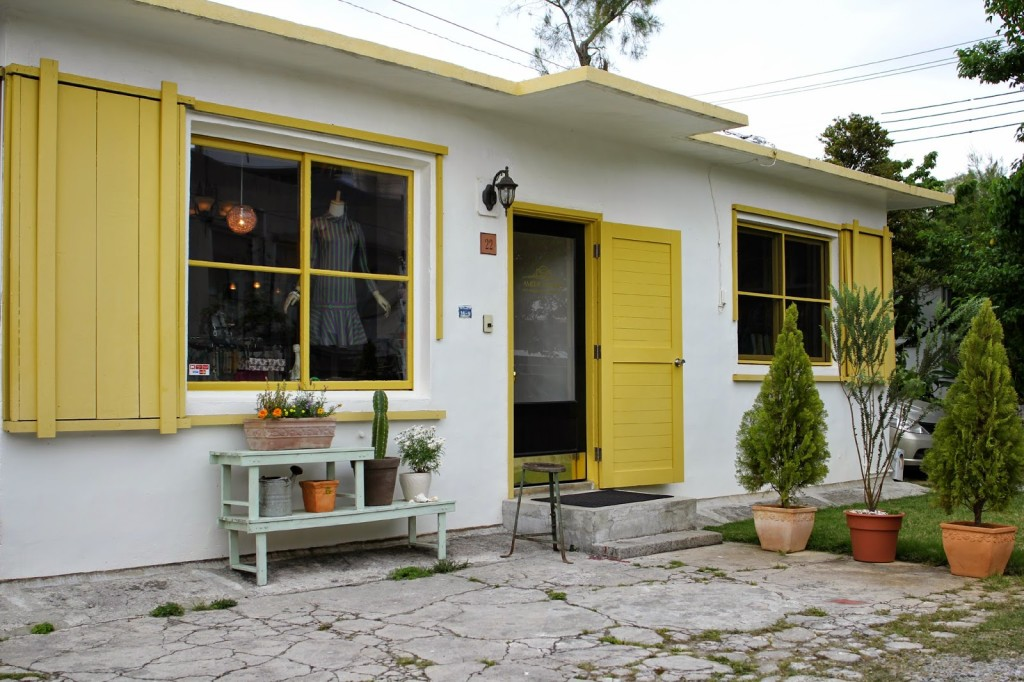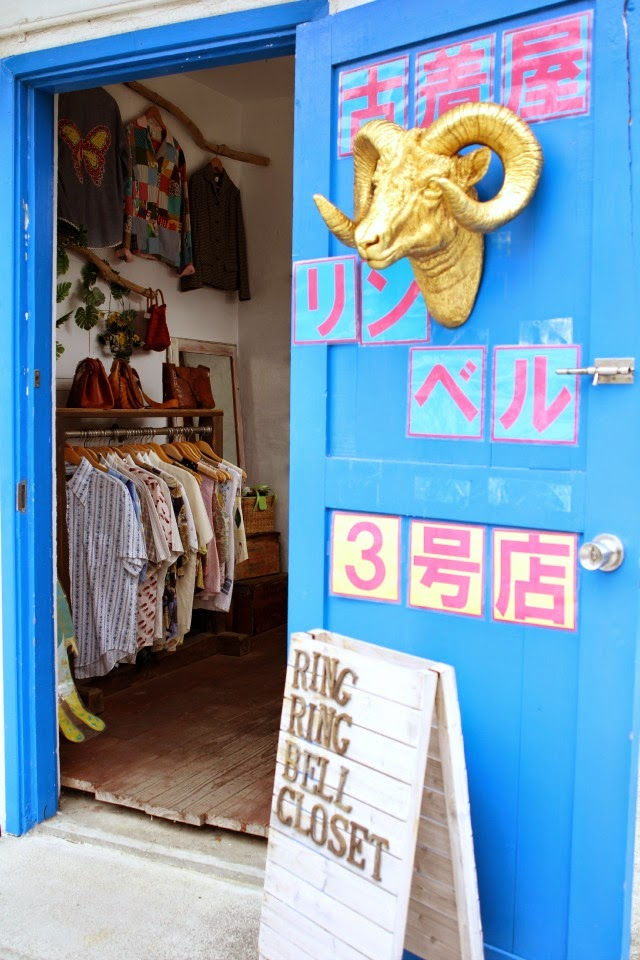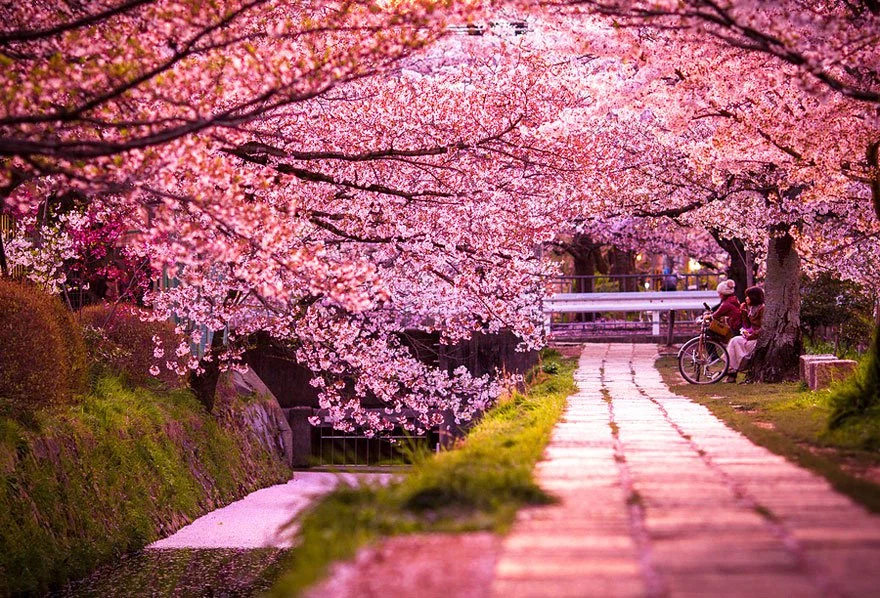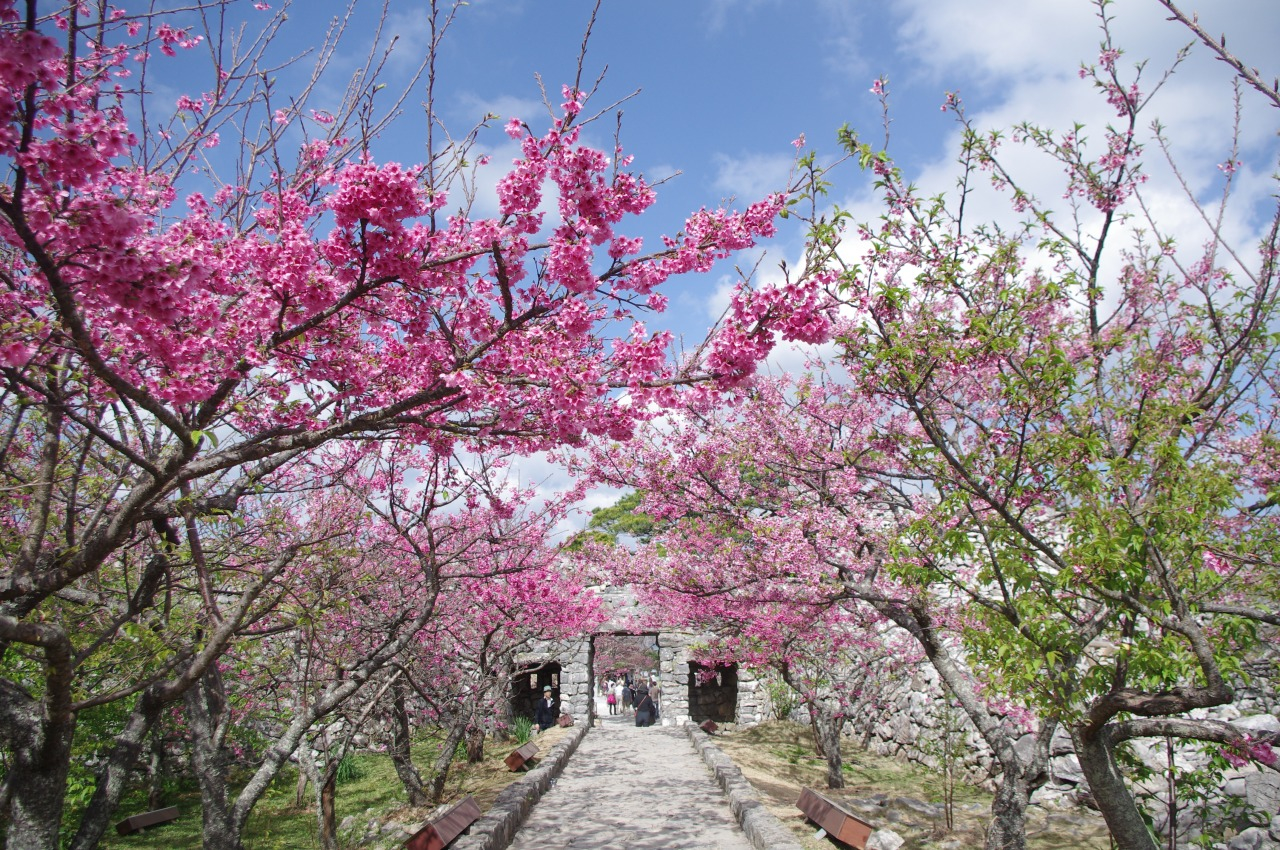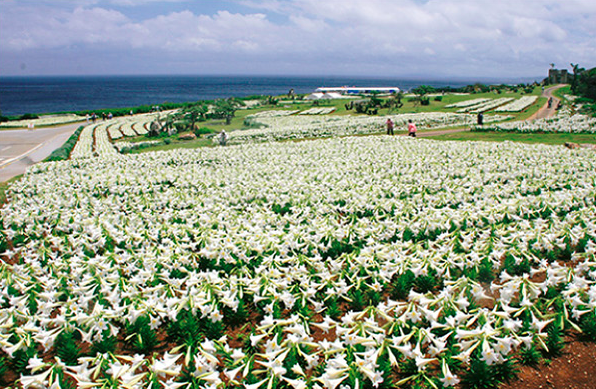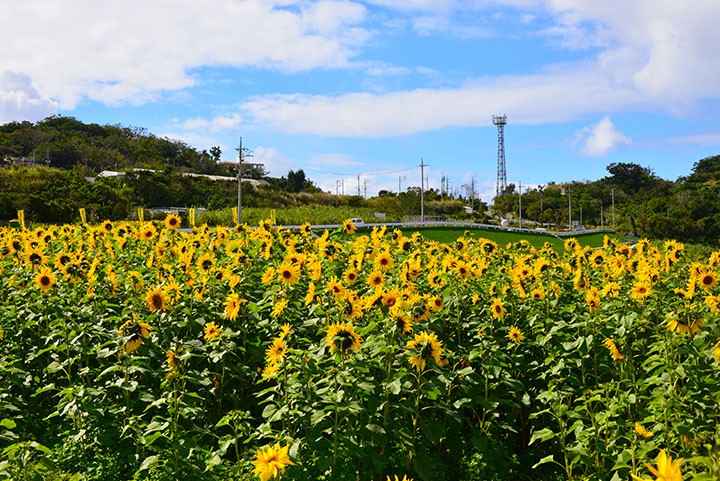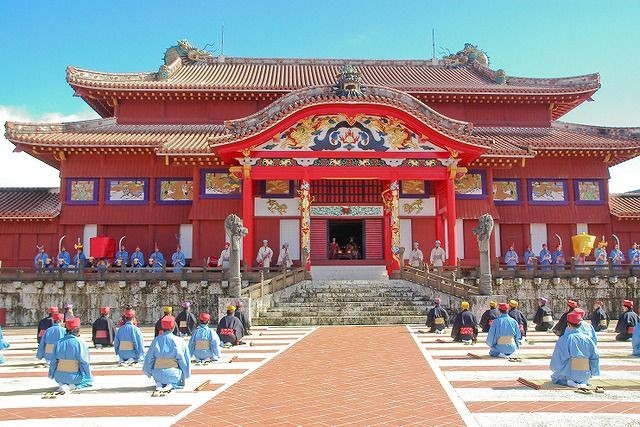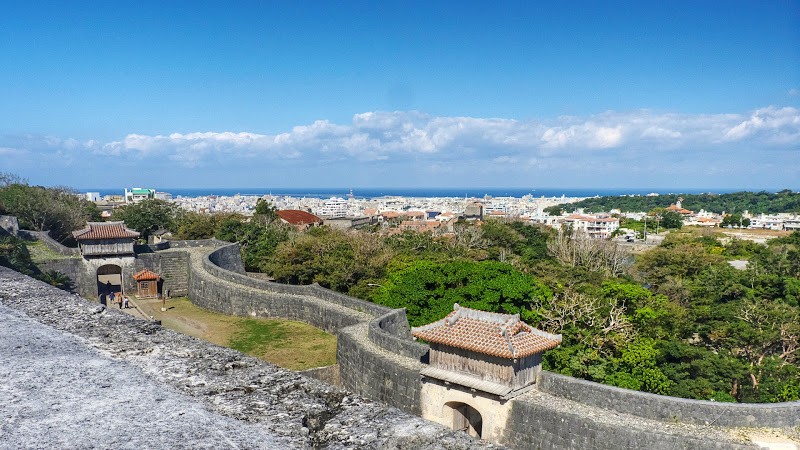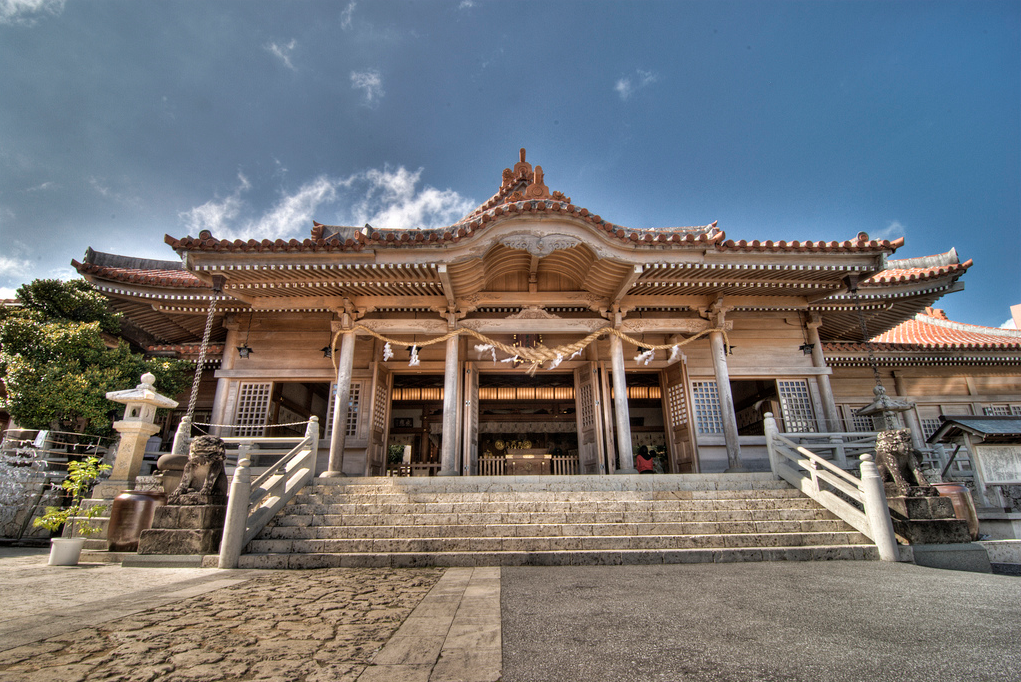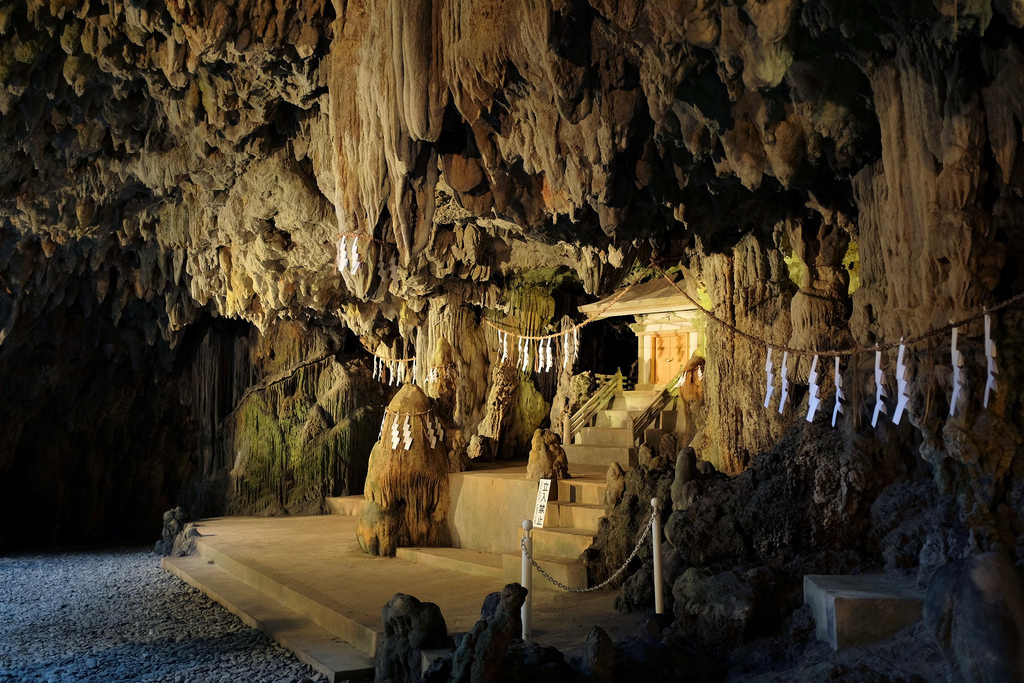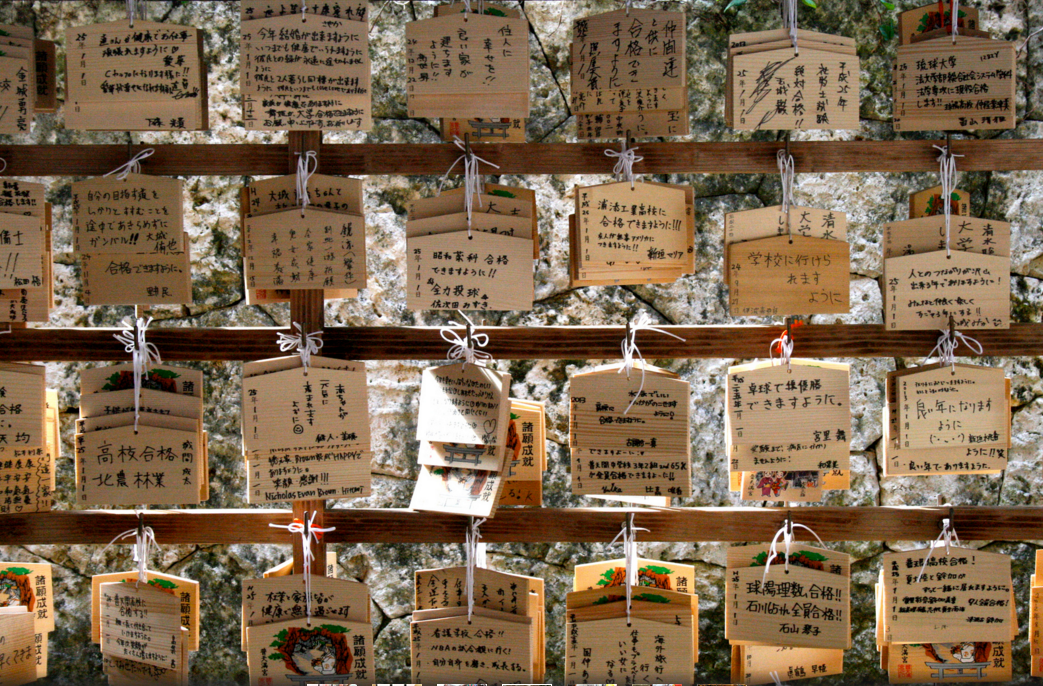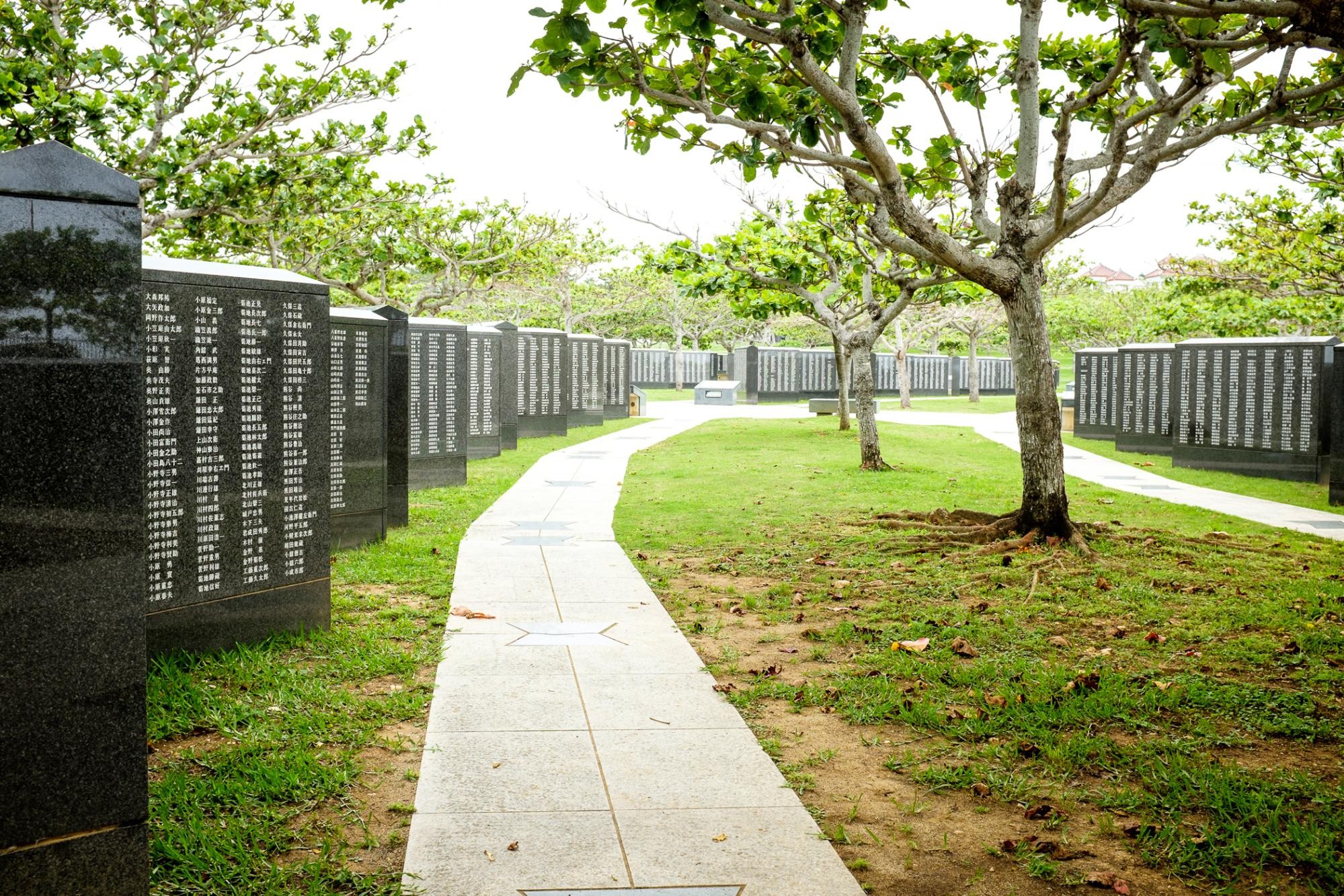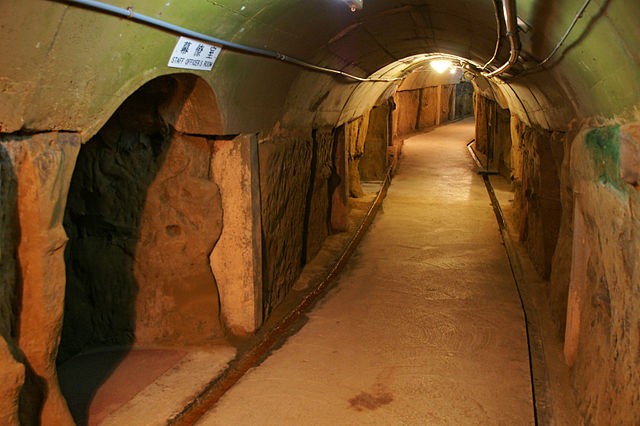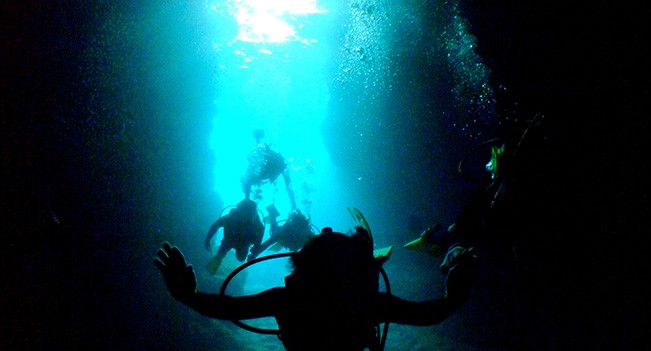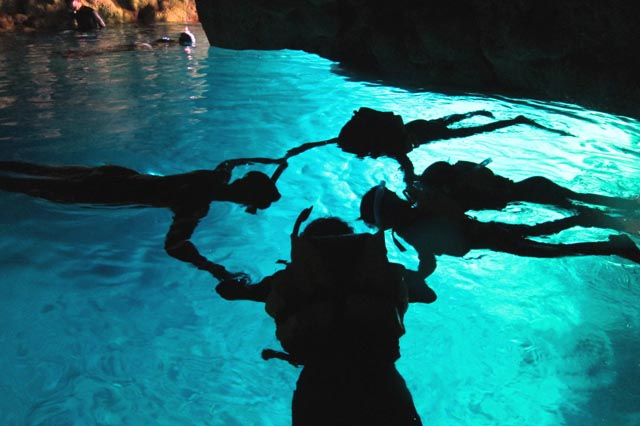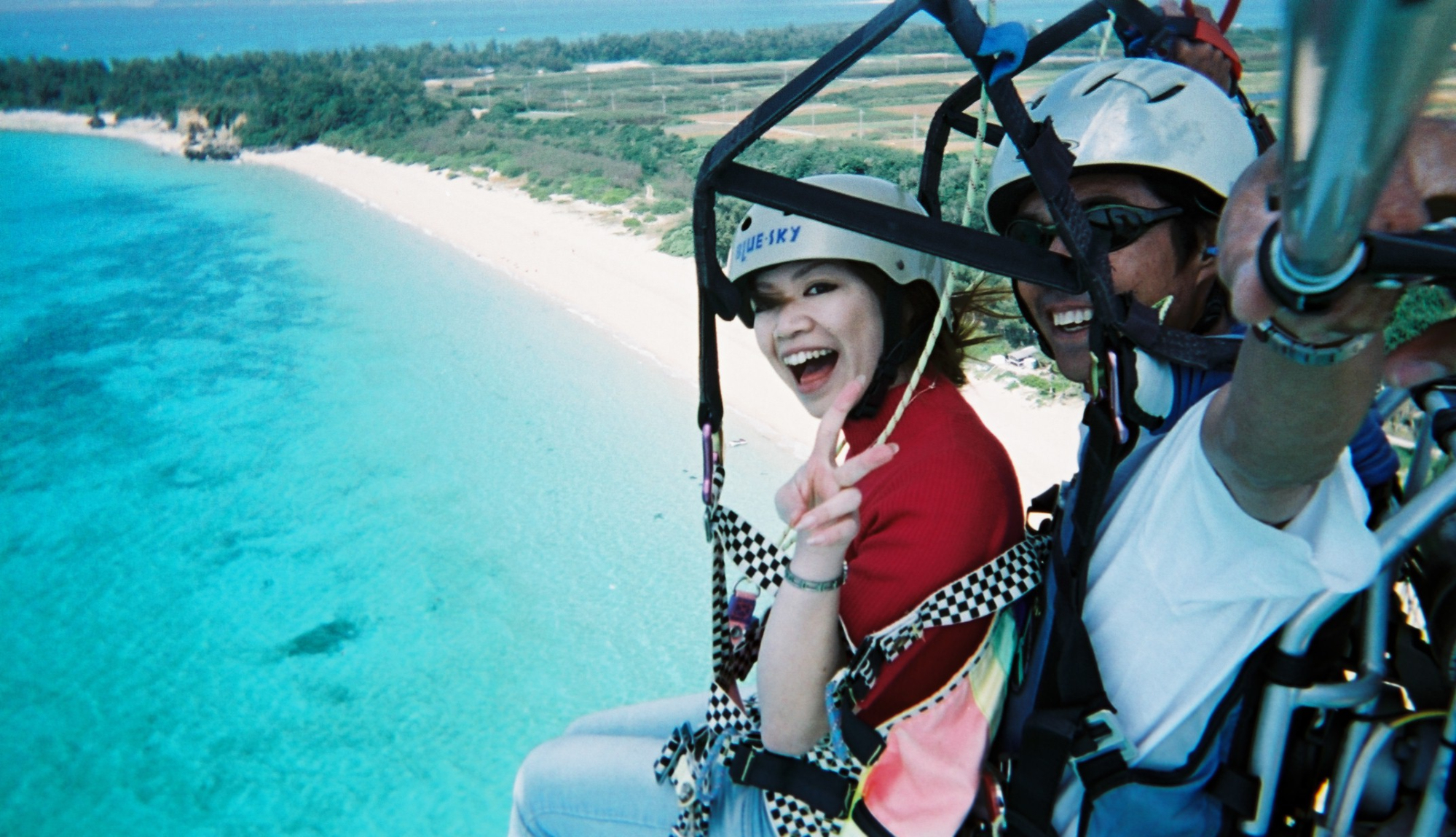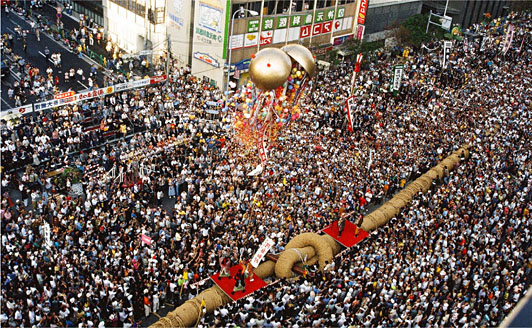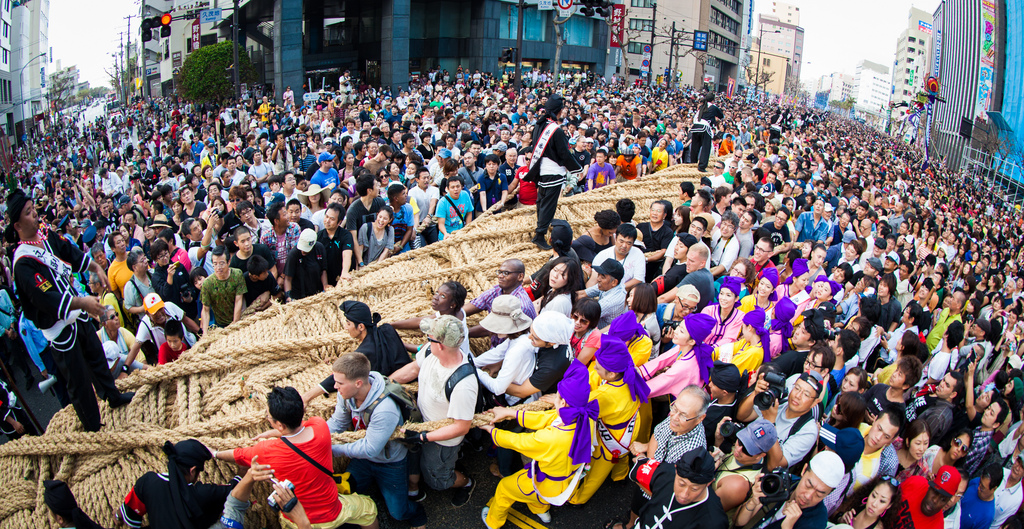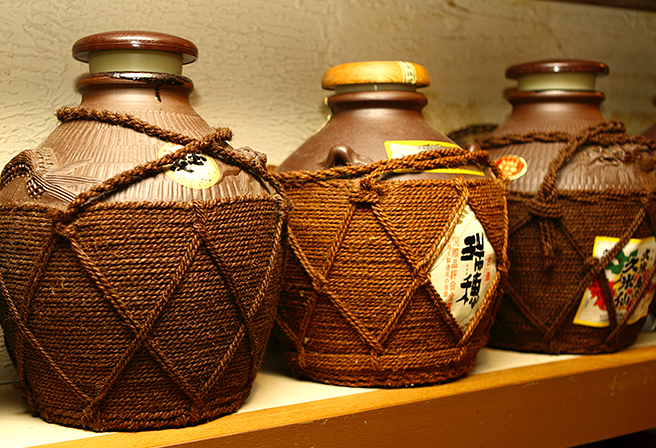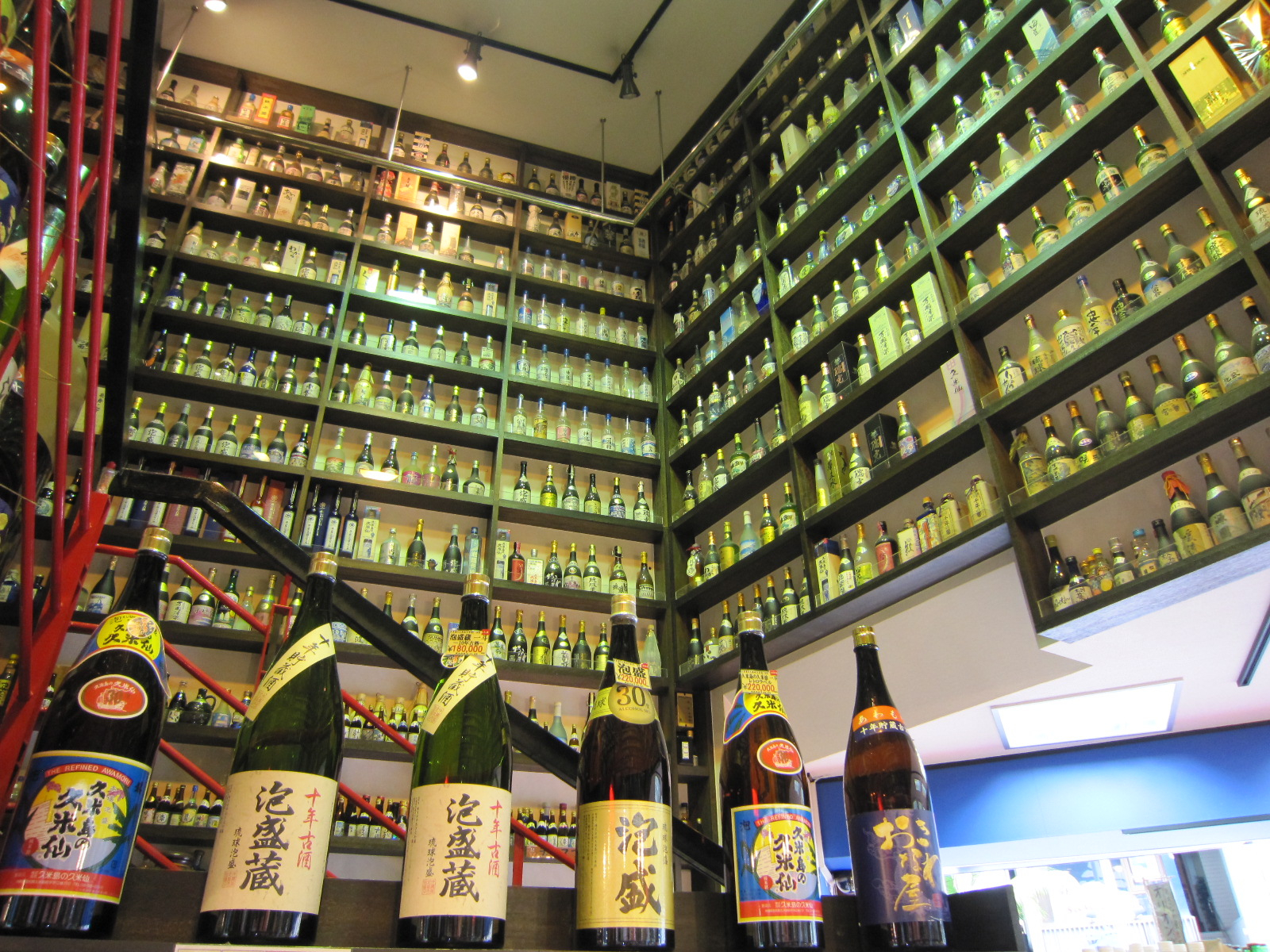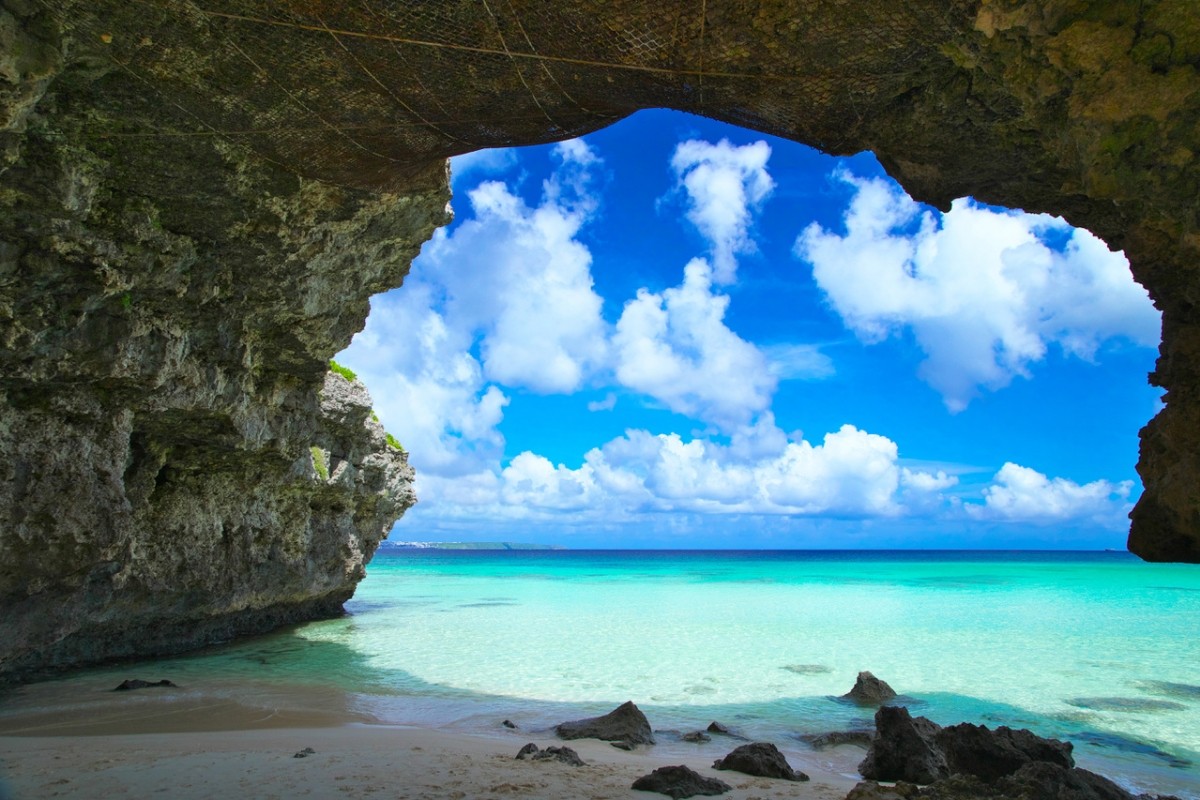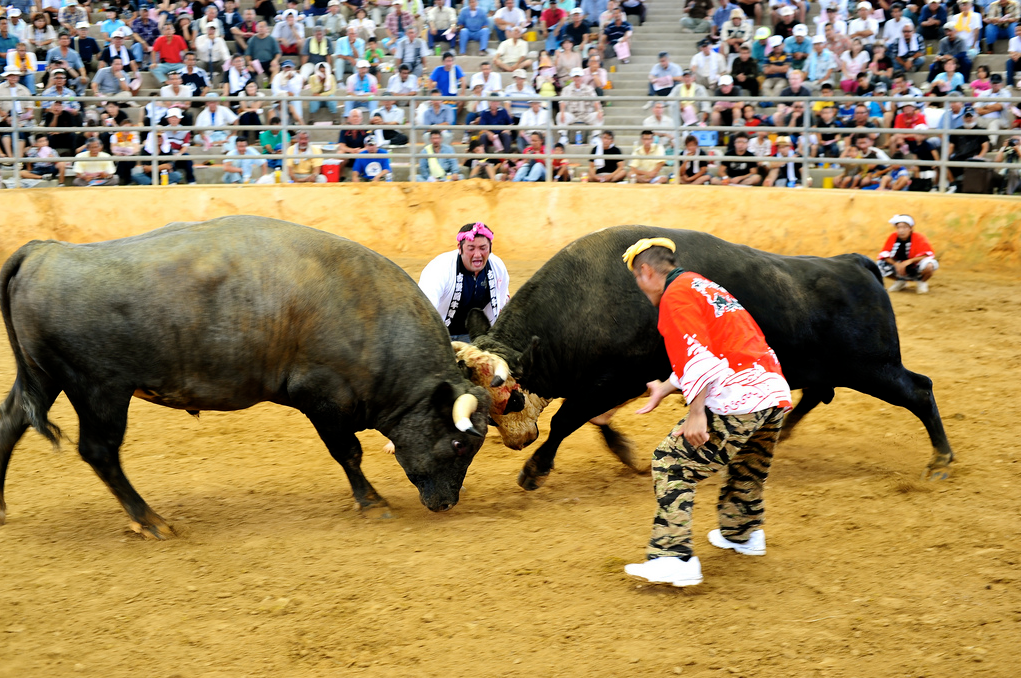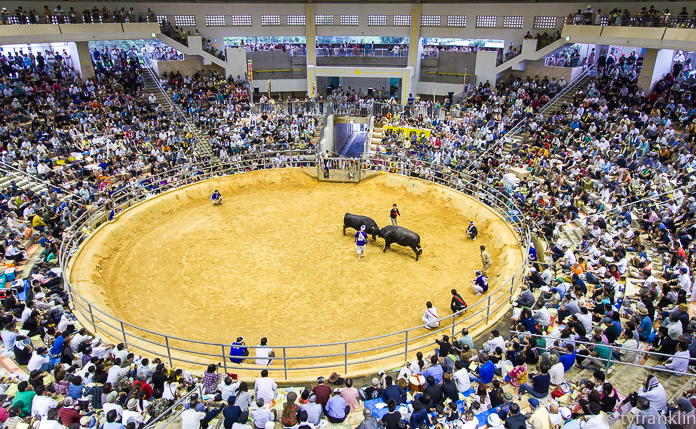Japan’s undiscovered gem
A chain of islands further south from mainland Japan, Okinawa is a favourite getaway destination for many Japanese, and it’s not hard to understand why. Whether we’re talking food, culture, or nature, Okinawa is stunningly multi-faceted and uniquely captivating.
Here are 25 things you need to do in Okinawa when visiting for the first time.
1. Witness the meeting of two oceans at Cape Hedo
Sat at the northernmost point of Okinawa Island, within the Kunigami Village is Cape Hedo – a rugged coastal island that boasts grand rock formations, and stunning panoramic views of the Pacific Ocean on the East, and the South China Sea on the West. Free of commercial elements, it’s a surreal escape from the buzz of the mainland.
With shrines and monuments dotting the route, the leisurely hike up is both enthralling and educational.
2. Go scuba-diving in… The Toilet Bowl?!
Cape Manza, or Manzamou in Japanese, is perched atop the western side of Okinawa island, and fronts the expansive South China Sea. It’s literal translation depicts a field with the capacity to seat 10,000 people – an apt description given it’s grassy and relatively level cliff top.
A stunning sanctuary that speaks of Mother Nature’s splendour, it’s also home to a popular dive spot curiously known as The Toilet Bowl – so named because of the peculiar shape of its coast.
Even if water activities aren’t your thing, you’re bound to get a laugh out of telling your family and friends you went wading in The Toilet Bowl’s tide pools.
3. Channel your inner Tarzan and trek your way to the breathtaking Tadake Falls
If you want the best that life has to offer, you have to earn it – the same goes for the Tadake Falls. Nestled deep in the heart of the Northern Okinawa jungle, the hike to this awe-inspiring remote waterfall presents quite the challenge.
Prep yourself for an adrenaline-pumping day of hiking, river trekking, water sliding, jungle swinging, and rope climbing, but we promise it’ll all be worth it.
4. Discover the mysteries of the deep blue Okinawa Sea
The inner child in all of us will be jumping in excitement at the Churaumi Aquarium – think majestic giant whale sharks, manta rays, tropical deep sea fish, and colourful corals. With more than 700 different species, the aquarium is spread over three floors and houses the largest tank in the world – the Kuroshio Tank.
And have you seen some of those rare species of fish? Man, do they look WEIRD.
5. Explore the 300,000-year-old Gyokusendo Cave
Located in Okinawa World, a theme park built upon the Okinawan culture, is an other-worldly underground limestone cave spanning over 5km. Here, glowing streams, psychedelic stalactites, and stalagmites dwell; and the sound of trickling water makes a soothing euphony – it’s a magical scene you have to experience for yourself to believe.
A walk through the cave will take you through all 890m of the natural maze on a well-lit metal walkway. But if you’re paying the Gyokusendo Cave in the summer – and you’re craving for a greater adventure – special tours will take you beyond the public zones, to depths of the cave that can be can only be reached by wading through the underground river.
It might require a fair bit of getting down and dirty, but if a little hiking is exactly what you’re looking for, you’ll be in for a treat.
6. Face your reptilian fears at the Habu Museum with GINORMOUS snakes
Also within the grounds of Okinawa World, is the Habu Museum Park. The park consists of the Habu museum, a reptile mini zoo, and a petting zoo. Learn about the ecology of reptiles, get friendly with them, or even explore a dark room with countless snakes on the loose – if you dare. Don’t forget to take a snap with the big golden python afterwards.
Or maybe even a casual cuddle with your new scaly friends…
7. … Then savour some snake sake
The obvious thing to do after petting some snakes, is to consume them – in the form of Habushu (snake-infused sake), no less. Some even believe that the strength of the Habu snake will be passed on to the drinker.
Once you’re done with Habu Museum Park, hop over to the distillery where Habushu is fermented. You know what to do from there on!
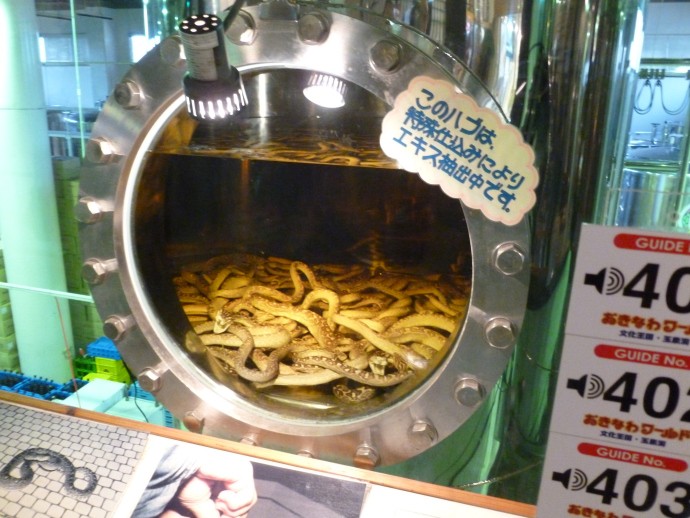
The snake fermenting process Source
8. Embrace the Okinawan spirit with an Eisa performance
Catch daily Eisa performances at Okinawa world, a traditional folk dance native to the island, performed by young people to honour the spirits of their ancestors. Vibrant, loud, and full of energy. You can even join in if you like!
9. Go on a guilt-free shopping spree at Ashibinaa Outlet Mall
Just a 15 minute drive away from the main island, and a stone’s throw away from the airport is the Ashibinaa Outlet Mall houses over 100 luxury boutiques such as Marc Jacobs, Salvatore Ferragamo, as well as mid-tier high street outlets such as Banana Republic, and Levi’s, with crazy discounts.
I’m aware discounts are a trap, but they’re ones I’d willingly fall for any day. But when it comes to last minute souvenir hunting, or present buying, convenience is key. Let me just buy this Michael Kors wallet in three different colours of the same design. May you follow in my footsteps, and go wild, my friends.

10. Have the sashimi binge of your life at Makishi Public Market
The Makishi Public Market isn’t known as “the Kitchen of Okinawa” for naught – with its glorious array of freshly caught seafood, meat, and tropical fruit; you’ll be eating your way through the typical life of an Okinawan.
Shoutout to all you sashimi lovers, the Makishi Public Market is Okinawa’s closest thing to Tokyo’s Tsujiki Fish Market, and a treasure chest of affordably priced and extremely fresh sashimi.
Take your pick of lobster, sea snails, fish, and even snakes! And for those with weaker stomachs, you can even take your buys up to the eateries on the second floor and have them prepare it for you.
While you’re there, try and spot Jennifer, a severed pig’s head that has been the market’s mascot for the past 10 years. Replaced every business day for obvious reasons, the one you’re seeing now will probably be the 4,000th one or so!
11. And yes, this includes GOAT SASHIMI
Hija-sashi (goat sashimi) is considered a delicacy in Okinawa. It’s definitely the first we’ve heard of it too! It’s a good balance of chewy and tender, often seasoned with spices and soya sauce to hush the strong gamey flavour.
I could go on with a lengthy description, but you know, the only way to know if it’s your thing, is to try it for yourself!
12. Savour Okinawan specialties
Okinawans consume a lot more meat than their mainland Japanese counterparts, but given it’s their specialty – who can blame them? With a pig farming history of more than 600 years, it’s no wonder that out of all their famed dishes, their black pork is especially sought after.
The meat is rich in intramuscular fat, nutrients, and is more flavourful and tender when cooked. Do yourself a favour and try some rafute (simmered pork belly) – it’s worth every calorie and more.
Umibudo (sea grapes), a type of seaweed lovingly nicknamed “green caviar”, is another Okinawa specialty. It’s best served with a soy sauce or vinegar dip, or as a topping on rice. And it really does pop in your mouth like caviar!
Okinawans hold the title of having the longest average lifespans, and have the highest population of centenarians in the world. Many of them attribute their long, healthy lives to a diet of rich superfoods like the Benimo (purple sweet potato).
Said to be rich in nutrients and anti-oxidants, that’s all the convincing you’ll need to indulge in benimo everything – benimo ice cream, benimo fries, benimo noodles, benimo doughnuts – EVERYTHING.
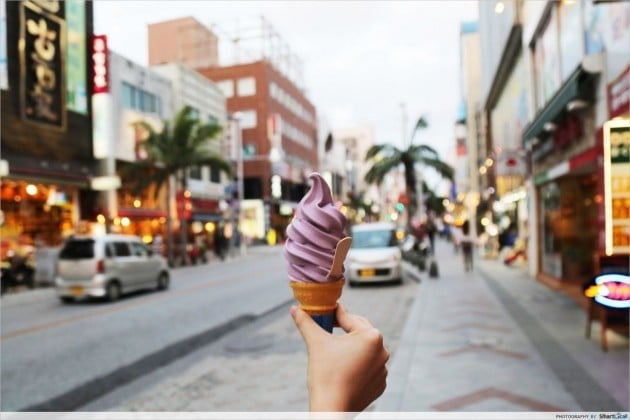
13. Bask in West Coast vibes at Mihama American Village
The Mihama American Village will transport you right to the Californian Bay with its West Coast vibes. Built on former US Forces airfield, the idea behind the entertainment complex came from Seaport Village, a shopping mall in San Diego.
The village boasts an eclectic mix of shops from anime goods stores to vintage boutiques, to restaurants, cafes, a movie theatre, and amusement facilities such as karaoke studios.
When day breaks, head to Sunset Beach right behind the village to catch a postcard-worthy sunset – it’s so named for a reason after all!
14. Or step straight into an anime in Minatogawa Stateside Town
Stepping into this quaint little village of restaurants and boutique shops, you would never have guessed that this stateside town used to be the housing area for a former military base. Each street is named after states in US – there’s Florida Street, Kansas Street, and the like.
I’m sure I’m not alone in this, but I could totally picture Totoro strolling around the village.
The shops here are charmingly quirky – ones you definitely won’t find on the high street.
15. Chase the cherry blossoms in their glorious full bloom
Given Okinawa’s geographical location at the southernmost corner of Japan, it is the first to usher in the waft of Spring. This also means it celebrates the Sakura Festival way ahead of the rest of mainland Japan, typically in January each year.
Unlike the white and pale pink ‘Somei Yoshino’ cherry blossoms that you’re used to seeing on the mainland, the blossoms that paint the city of Okinawa a bright pink are of the ‘Yaezakura’ variety.
And when it comes to Hanami (flower viewing) celebrations, Okinawans do it better. Doll yourself up for the costume parades, or sit back and enjoy a traditional taiko drum performance – just don’t leave yourself out of any of the festivities!
And if you’re looking for the perfect spot to enjoy the sakura in their full glory, the Nakijin Castle is a hot favourite amongst families. During the festival period, the sakura can be viewed during the daytime and will be lit up at night (between 6pm and 9pm).
16. And catch other flowers when they blossom
The Japanese are nailing these flower festivals. Check out the Lily Festival on Ie Island, a short 30-minute ferry ride away from mainland Okinawa. This week-long festival typically runs from the end of April, to the beginning of May.
If you’re visiting during the wintry months of January, don’t miss the Sunflower Festival in Kitanakagusuku, a small village in central Okinawa. I know what you’re thinking: summery sunflowers? In the height of winter? It’s hard to believe, but the Okinawans can work miracles.
17. Relive the lives of the Ryukyu kings at the Shuri Castle
Palace to the Ryukyu Kingdom some 600 years ago, the Shuri Castle was destroyed multiple times over the centuries by wars and fires before its reconstruction back in 1992. Lavishly decorated and vermilion-coloured, the castle is vastly different from other castles in Japan that are typically more muted in terms of architectural style.
The castle sits atop a hill, so you’ll be treated with a nice view over the city too!
18. Make a wish at the shrine with a cave
The Futenma Shrine is a pair of gold-laced, majestic temples where tourists and visitors alike to pray for good fortune, or simply to appreciate the serenity of the place.
Behind the shrine is an underground cave within the temple grounds. Serving as a place of worship and prayer even before recorded history and long before the shrine was built, legend has it, that the cave was once home to a lady of unrivalled beauty, who later transcended into a goddess.
Don’t leave without purchasing an omikuji (a strip of paper containing a random fortune), or writing your prayers and wishes on an ema (wooden wishing plaques), and hanging them on the shrine.
19. Explore Okinawa’s war-torn history
The war experience is what the local people refer to as the “Okinawan Heart” – it is symbolic of the resilience of the Okinawan people, as they struggled against the oppression of the US military.
Discover the Peace Memorial Museum, home to this treasured piece of Okinawa’s history, which so permeates the island’s culture and way of living. In addition, visit the Peace Memorial Park, a sobering ode to some 200,000 lives lost in the Battle of Okinawa.
Don’t miss the former Japanese Naval Underground HQ. Here’s a creepy fact to note: it is said that as many as 4,000 sailors committed suicide in these tunnels – you’ll even spot grenade explosion marks on the walls.
20. Dive into a fantasy world in the enchanting Blue Cave
Step aside, Tioman. Behold, Okinawa’s way cooler diving spot, the Blue Cave. No prizes for guessing where the Blue Cave gets its name from.
Located just off Cape Meada, in Onna Village, the Blue Cave is another popular dive spot in the Okinawa precinct. With a white limestone base that reflect the sun’s rays, the cave is constantly illuminated in a magical blue light, giving diver’s a mystical experience like no other.
21. Take in an aerial view of Okinawa on a paragliding adventure
If you’re an adrenaline junkie who has conquered everything from skydiving to bungee-jumping, put the chill back in your life with a relaxing sail over the glistening beaches of Okinawa. For an island famed for its impossibly white beaches, you can’t not check paragliding off your beach bucket list – especially when you’re flying over waters of emerald blue.
22. Emerge victorious in the Naha Tug-of-War
Every October, some 275,000 participants gather for the great Naha Tug-of-War. Mind you, it’s no child’s play.
See what I mean?
The main rope is massive, spanning over 1.5m in diameter, and 200m in length, with many smaller ropes extending from it for participants to join in on the fun.
Regardless of the result, every participant gets to keep a piece of the rope as a token of good luck. Now, that’s what we call a friendly match.
23. Sip on (or chug) some Awamori
When most people think of Japanese alcohol, the first thing that comes to mind is sake or shochu. Awamori – their oft-neglected cousin – is an Okinawan favourite, and rightfully so.
This alcoholic beverage, unique to the island, is distilled from long-grain Thai indica rice, yielding a more complex flavour profile with a hint of sweetness.
For a thirst quencher like no other, enjoy your awamori on the rocks, or in a cocktail. Locals even like to dilute it in some water for a mellower kick. You can even add it to your milk or coffee – the options are limitless!
Also, it’s SUPER CHEAP. We mean 500 yen (S$6) for a 750ml bottle kind of cheap; even higher-end options rarely top 4,000 yen (S$48.40). Score!
24. While the day away on the pristine Okinawan beaches
Ask anyone who’s Japanese, and they’ll tell you that the best beaches in Japan are found on the Southern coast of Okinawa. And we don’t just mean the beaches found on the main island, we’re talking about the elusive private ones too. Where their mesmerizing turquoise waters, and powdery white sandy beaches are the stuff of dreams.
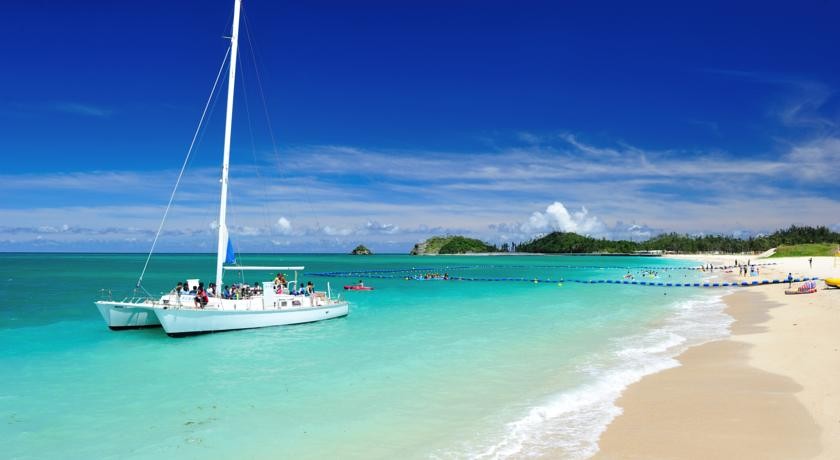
Okuma Beach, one of mainland Okinawa’s many beaches. Source
The sandy coast of Sunayama Beach sports an iconic stone arch, formed by centuries of crashing waves cutting a natural gate into the rocks. Located on Miyako Island, it’s a short plane ride away from the main island – as are many of the most beautiful beaches in Okinawa. That might sounds like a lot of trouble, but I promise you’ll be glad you make the effort!
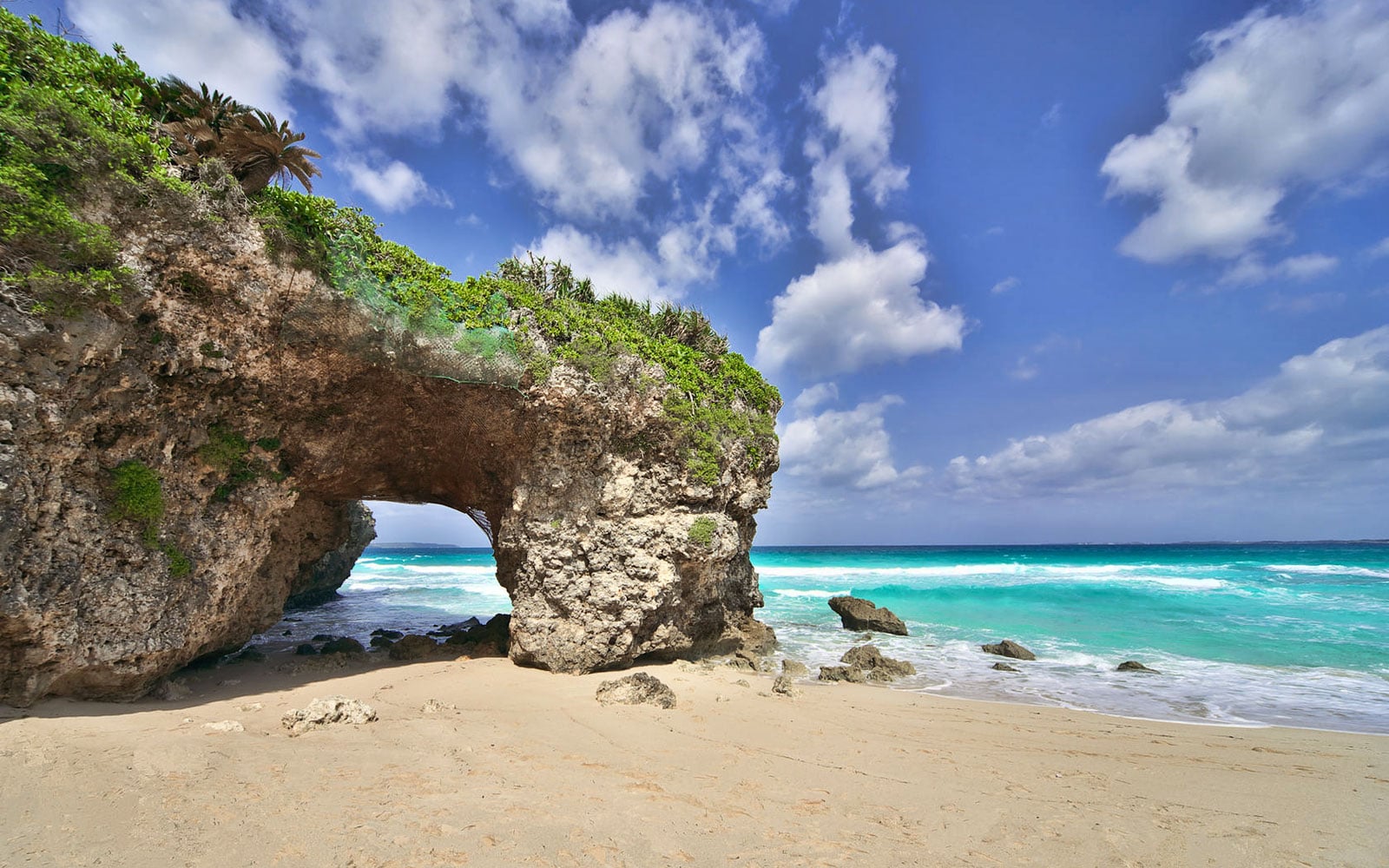
Sunayama Beach. Source
25. Witness an Okinawan bullfight
Bullfights in Okinawa, are quite unlike the Spanish or Portuguese sort – there’s neither a matador taunting the bull with a red cape, nor a scene gruesome bloodshed after. Rather, it’s the bold locking of horns between two bulls – kind of like sumo wrestling.
There are over 40 bullfighting tournaments throughout the year, held almost every Sunday in various bullrings around the island; so be sure to catch one if you’re in the area!
Discovering Okinawa
Okinawa is where it’s all at – a treasure trove of secrets waiting to be uncovered. You might’ve been to Japan before, but Okinawa is quite unlike any of the other regions on the mainland.
Wanderlusting yet?
This article was brought to you by Okinawa Tourism.
